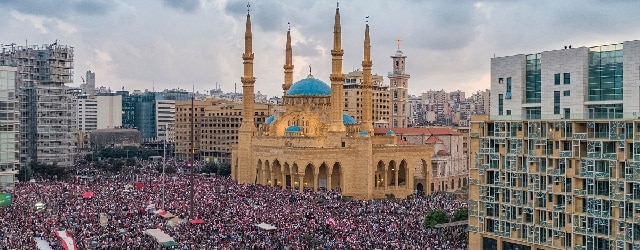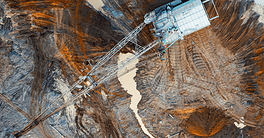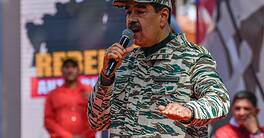A close-up look at how Lebanon and its banks reached the edge of the cliff—and the tough choices they need to make to step back from the brink.

In early March, Lebanon’s new government announced it would default on $1.2 billion in Eurobond debt and seek a restructuring program. “Our foreign currency reserves have reached a critical and dangerous level,” Prime Minister Hassan Diab said on television.
It’s the first time Lebanon has been unable to pay its debts. Yet it probably won’t be the last, since a further $700 million in Eurobonds mature in April and another $600 million in June.
The government has hired Cleary Gottlieb Steen & Hamilton and Lazard as its legal and financial advisers, respectively, on a debt restructuring. Beirut also called on the International Monetary Fund (IMF) for assistance.
None of this is really a surprise. Lebanon is the world’s third-most indebted state, with a public debt equal to 169% of GDP at the end of last year, according to Standard & Poor’s.
Economic imbalances are deeply rooted. Lebanon has no hydrocarbon resources or heavy industry. Yet the uneasy equilibrium between the country’s bitterly divided ethnic and religious factions requires at least the semblance of economic growth, plus a certain amount of palm-greasing, to survive. The post-civil war economy relies mainly on money transfers from its diaspora, one of the largest in the world.
Remittances pay for, among other things, the lira’s peg to the dollar, at 1,507 Lebanese lira to $1. The peg was initially put in place in 1997 to provide currency stability while the government promised to enact economic reforms; instead, it financed artificially inflated salaries and lifestyles for over 20 years—implicitly, to maintain the factional balance of power. In its most recent Article IV monitoring report on Lebanon, the IMF warned the lira was overvalued by at least 63%.
Maintaining the peg has required Lebanon to keep deposits coming in, which required keeping interest rates high. This, in turn, created a rent economy and destroyed any competitive advantage the country might have developed.
“The financial sector’s only role was to attract deposits. There was no economic vision,” says Jean Riachi, founder and CEO of FFA Private Bank.
The End of the Fairy Tale
For a time, the Lebanese economy could also count on oil-rich Gulf states to generate tourism and foreign direct investment, mainly in real estate, but that came to a halt when the Syrian civil war commenced in 2011. At the same time, remittances from the diaspora decreased substantially, as many Lebanese abroad suffered from the global economic slowdown and especially the fall in oil prices.
As a result, GDP growth fell below 2% from 10% in 2009. Deficits in both balance of payments and budget grew. The country started spending its reserves with no short-term prospect of new sources of revenues. In 2016, the Banque du Liban (BDL) launched a series of financial engineering measures, pushing banks to offer unusually high interest rates—up to 20%—to attract U.S. dollar deposits from abroad.
“It was a gimmick to show that we were able to bring dollars to the country,” says a senior analyst at a major Lebanese bank. “The main goal was to keep the system going because we knew that once we lost trust, the whole thing would collapse.”
“Everybody knew implicitly that the cancer was growing and that it might reach a stage where it couldn’t be operated anymore,” says Freddie Baz, former vice president of Bank Audi, Lebanon’s biggest bank. Efforts to keep the banking system afloat began to resemble a Ponzi scheme, some close observers say.
“I think a lot of the [bank] boards didn’t even realize what was going on,” says Dan Azzi, former CEO of Standard Chartered Bank Lebanon. “It worked as long as depositors weren’t pulling their money out. These guys were earning crazy interest rates, but they got stuck in the system. Now their money is gone.”
The Crash
The BDL’s financial engineering stoked controversy in Lebanon and abroad. Although public criticism of the central bank wasn’t welcome back then, abnormally high interest rates raised doubts.
“The inadequacy of reserves between foreign currency reserves and the FX needs of the country started to show at the end of 2018, beginning of 2019” Baz recalls.
Talk of a possible currency devaluation spread through the media, and depositors’ confidence began to crumble. Major importers such as gas stations went on strike, and popular protests began. Fear of a liquidity shortage drove depositors to convert their holdings to foreign currencies, transfer money abroad or withdraw it in cash. The outflows reached $15 billion—9% of total deposits—by last November.
To stop the bleeding, banks imposed informal capital controls on all of their clients. Unable to collect their deposits, many Lebanese—and especially business owners and importers—had no choice but to buy foreign currency on the black market. The lira lost more than 40% of its value in just a few weeks.
“The entire economic model collapsed. It can never go back to what it was,” says Jean Tawil, an economic expert and conomic advisor to Samy Gemmayel, a Lebanese politician.
“We are in the middle of a third-generation model of currency crisis,” says Baz. “It’s a mix of a public finance, economic, currency and bank liquidity crises. This kind of cocktail causes huge distortions: a contraction in GDP, high inflation, more inequalities in income distribution and a boom in unemployment rates.”
Time for Reform—but How?
Lebanon is now stuck with a huge debt and not enough foreign currency reserves to back it up. To avoid further damage, it needs cash—and quickly.
Finance Minister Ghazi Wazni announced in March that Lebanon needed $25 billion to $30 billion in assistance over the next five years. Although some political parties, including Hezbollah, spoke harshly about “imperialist tools,” a likely option for funding seems to be the IMF.
Since most of the debt is internal, Lebanon could also try to solve the crisis internally. But that would require strong leadership capable of imposing austerity measures and long-contemplated structural reforms, such as an official devaluation of the local currency, a tax hike or a reduction in subsidies and the public-sector budget.
“We need a plan for structural changes that will allow for a diversification of sources of revenue and sustainable growth,” says Tawil.
Either way, the financial sector—currently composed of about 40 banks for a population of six million—seems set for a complete revamp.
“The banking sector needs to be restructured, downsized and recapitalized,” says Riachi. Lenders are currently considering options for recapitalizing, such as selling assets abroad or bail-ins by big depositors. Another option could be haircuts for bondholders—the banks themselves—that would then relay the losses to depositors.
“We need money and there is no other solution than to tap into big accounts,” says Baz. “If you look at the consolidated balance sheet of banks and you make a stress test on all asset classes, expected credit losses on each class will reach an amount beyond the level of equity and this would require a special tax on big deposits in order to recapitalise banks,” Baz said. That would be a hard decision in a country where big account holders often hold key jobs. “Granted, they are in government and decision-makers. But guess what? They have no choice. The money is gone,” says Azzi. “The only choice is not about the haircut but about how you distribute the loss. Is it going to be only the big accounts, or will it be spread all the way down to small account holders?”
Spreading the Pain
The bad news for Lebanon is that fixing the situation is going to take time—and, judging from the options under discussion, will hurt everybody.
With the de facto devaluation of the lira, Lebanese households have lost almost 50% of their purchasing power. Inflation and unemployment are soaring. In a recent report, the World Bank predicted hard poverty in Lebanon would increase from 30% of the population to 50% in 2020.
“We are curtailing our lifestyle. We are going to be living based on our real productivity and capabilities until we start innovating, creating something people will want to buy abroad,” says Azzi.
To create new sources of revenue, Lebanon will have to encourage local production, entrepreneurship and innovation. A new economic system with these attributes will require support from the banking system. “The positive aspect is that banks will now be forced to play their role as financial intermediaries, taking money from depositors and reinjecting it in the real economy,” says Tawil.
But first, Lebanon needs to know if foreign aid and investment will give them the breathing room and the vote of confidence they need to get started—and to avoid another bout of ethnic and sectarian conflict. The answer is probably no. Oil-rich Gulf states are still put off by Hezbollah’s role in the region, and Western governments don’t appear eager to sponsor, once again, Lebanon’s corrupt ruling class.
For now, Lebanon’s economy—and its fragile social compact—are both in peril.



